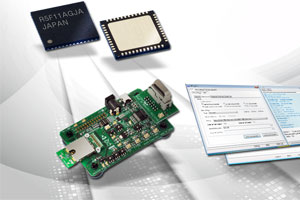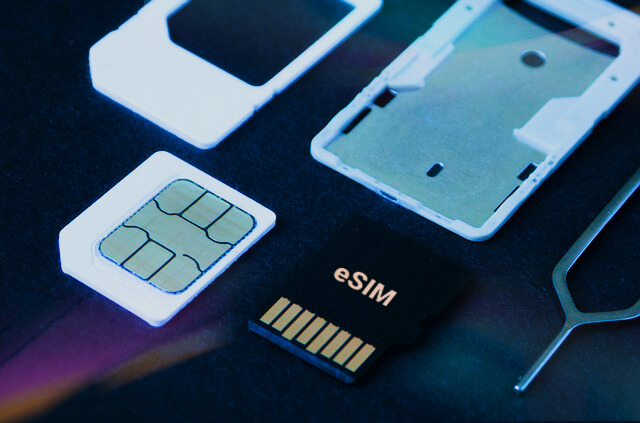Renesas Electronics announced a new wireless solution that supports the Bluetooth® Smart near field wireless communication standard.
The new RL78/G1D Group of microcontrollers (MCUs) has been developed by combining the low-power RF Transceiver Technology for Bluetooth® Low Energy (BLE), which the company presented at the International Solid-State Circuits Conference (ISSCC) held in February, 2015, with Renesas’ expertise on consumer and industrial MCUs, and on-chip peripheral devices necessary for wireless communication.
By employing an evaluation kit and Bluetooth-SIG qualified protocol stack, the new MCUs enable system designers to conduct evaluation of wireless characteristics and initial evaluation of communication behaviors. The new MCUs are also provided with PC GUI tool for easy manipulation of these components. These will enable customers to easily develop Bluetooth Smart applications and reduce the time required for development while making effective use of development environment and software resources.
BLE is a near field wireless communication technology that holds great potential for connecting smartphones and a variety of other devices. In addition to smartphones, it is also suitable for use in devices linked by serial communication technologies such as UARTs and for implementing communication between units within a single piece of equipment. Eliminating the need for wired connections between such units provides greater design freedom and simplifies maintenance. This technology therefore has the potential to bring about major changes in embedded devices.
The Bluetooth Smart compliant RL78/G1D MCUs have been developed by combining the ultra-low-power RL78 MCU, which has achieved widespread adoption in the consumer and industrial fields, with the highly regarded low-current-consumption Bluetooth® low energy transceiver technology announced at the ISSCC in February 2015.
The current consumption of the RL78/G1D is among the lowest in the industry (3.5 milliamperes (mA) during reception and 4.3 mA during transmission), delivering substantially reduced power consumption that is a key consideration for wireless devices. A newly added adaptable RF technology adjusts the power consumption during wireless operation to the optimal level to match the communication distance. This dramatically lowers the power consumption of near field wireless communication, and it is complemented by the on-chip integration of most elements required for the antenna connection, contributing to reduced external component costs.
Key features of the new RL78/G1D MCUs:
(1) On-chip balun elements required for antenna connection simplify antenna connection circuit design
The new RL78/G1D integrates on-chip the balun elements that otherwise would have to be provided in an external antenna connection circuit. This makes it possible simply to connect the RF transceiver signal terminals to the external antenna terminals without the need for discrete balun elements. This eliminates the need to perform repeated matching adjustment and evaluation on a balun circuit, thereby saving on development costs. In addition, the components of the balun circuit do not have to be provided externally, lowering both the product cost and component management costs. Thus, production costs are reduced as well.
(2) Industry-leading low current consumption for extended battery life
The newly developed low-current-consumption on-chip RF transceiver supports version 4.1 of the Bluetooth Core Specification and enables wireless operation at among the lowest power consumption levels in the industry (3.5 mA during reception and 4.3 mA during transmission, at 0 dBm). This, combined with the excellent power efficiency of the RL78 family of ultra-low-power MCUs, makes for extended battery life. For example, when wireless communication takes place at one-second intervals while maintaining a connected state with another wireless device, the BLE functionality can be added with the industry-leading low average current of 10 µA.
(3) Function that automatically optimizes power consumption during wireless operation to match communication conditions
Built-in adaptable RF functionality optimizes the power consumption during wireless operation to match the communication distance. This prevents more power than necessary from being used, especially during near field communication. By using this functionality, under communication conditions where the wireless devices are located approximately 1 meter apart (varies according to the connection status) and when the frequency of wireless operation are raised in order to prioritize data transfer, it is possible to boost power efficiency.
Renesas positions the new RL78/G1D as a product that contributes to the near field wireless communication market, which is expected to grow with the coming of a more energy-efficient “smart society” and IoT. Renesas intends to continue to respond to the needs of the market with a broad lineup of products designed for ease of use.
Renesas at Bluetooth Europe
Renesas Electronics will showcase demonstrations featuring RL78/G1D MCUs at the Bluetooth Europe 2015 event to be held at the Hilton Tower Bridge London, UK from September 15 to 16, 2015.
Availability
The new RL78/G1D Group comprises of six product versions – 256, 192 & 128 KB on-chip flash memory options and industrial or consumer grade for each memory option. Samples are available now. Mass production is scheduled to begin in October 2015 and is expected to reach a combined volume of 1,000,000 units per month in 2016.
Refer to the separate sheet for the main specifications of Renesas’ new RL78/G1D MCUs.










